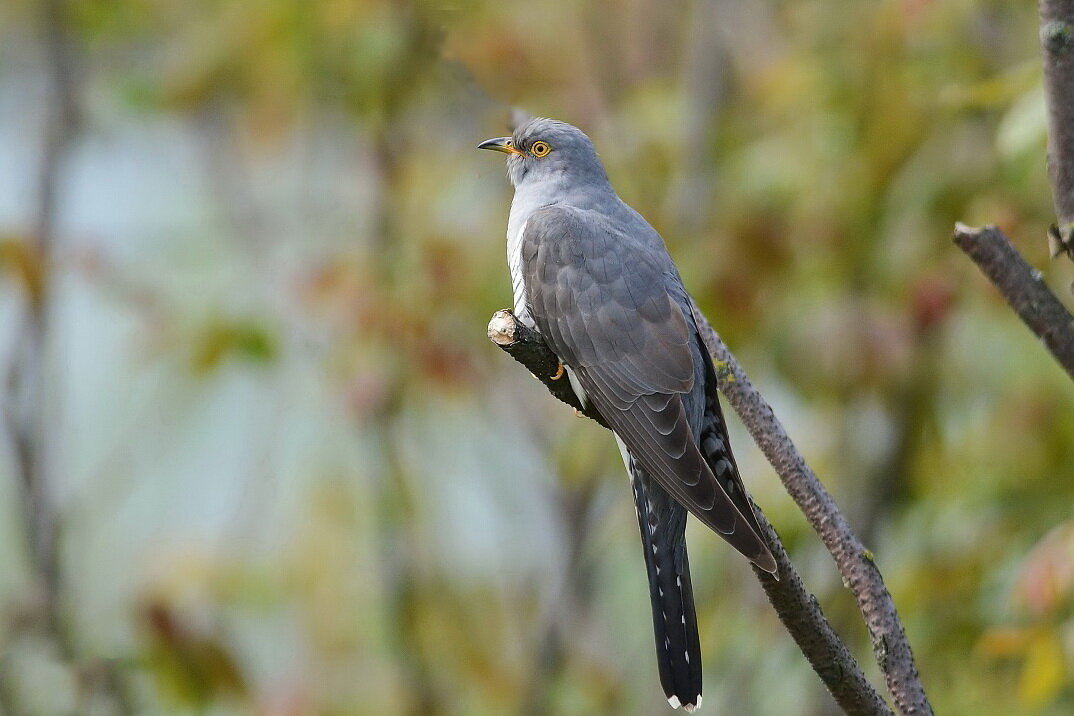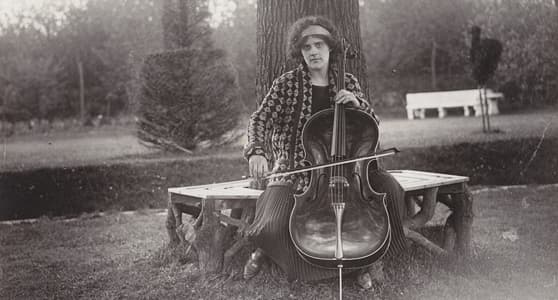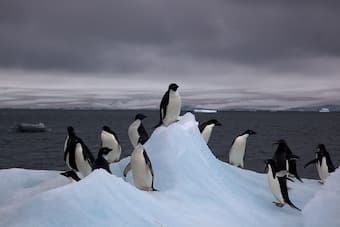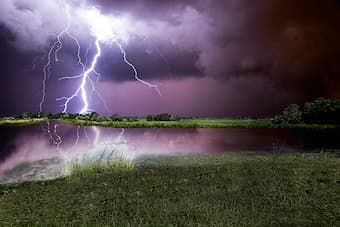When nature sounds are combined with human-made classical music, the results can be captivating.
From the delightful chirping of birds in a cellist’s English garden to the use of percussion and piano and wind machines to imitate the roar of the elements, generations of composers have taken inspiration from the space in which natural and manmade sounds intersect.
In this article, we’re looking at eight works that combine classical music with nature sounds.

Russian cuckoo
Delius’ On Hearing the First Cuckoo in Spring (1912)
In the peaceful tone poem On Hearing the First Cuckoo in Spring, composer Frederick Delius captures the essence of the season by orchestrating a cuckoo’s delicate call.
The work’s opening sets up a pastoral pre-war atmosphere, evoking bucolic English folksong. The cuckoo call initially starts around 1:43, returning again and again throughout the rest of the piece.
These nature sounds blend beautifully with the lush orchestral textures.
Beatrice Harrison’s Garden Cello Recordings (1927)
In 1924, cellist Beatrice Harrison brought her cello out to the garden and began to play. A BBC crew was standing by, waiting. Soon, they heard what they’d come to record: a lovely duet between Harrison and the neighborhood nightingales.
This experimental broadcast became an immediate cultural sensation and turned into an annual event that heralded the arrival of spring in England.

Beatrice Harrison
Harrison once claimed that she received over 50,000 letters thanking her for her and her birds’ performances.
So the next time you see a compilation album of classical music and nature sounds, think of Beatrice Harrison, who was one of the first musicians to come up with this concept almost a hundred years ago!
Bartók’s Piano Concerto No. 3, Movement 2 (1945)
Bartók’s third piano concerto was a bittersweet gift to his second wife, pianist Ditta Pásztory-Bartók. When he wrote it, he was terminally ill, and she was much younger than him. He wanted to give her a piece that she could use to perform and help support herself after his death.
The second movement opens with a Beethovenian chorale. The contrasting middle section features striking imitations of birdsong and insect calls (this part starts around 4:30).
Vaughan Williams’ Sinfonia antartica (1952)
In his Sinfonia antartica, composer Ralph Vaughan Williams created a truly unforgiving polar soundscape.

Adelie Penguins on iceberg
Portions of the symphony began life as a soundtrack to the 1948 film Scott of the Antarctic, which told the story of explorer Robert Falcon Scott and his Terra Nova Expedition and their ill-fated journey to the South Pole. (Scott died on the expedition, along with some of his men.) The sense of foreboding carries through to the full symphony.
In the final movement, Vaughan Williams uses a wind machine to imitate the unforgiving blasts of a deadly Antarctic gale. You can hear it begin around 37:55 in the recording above.
Messiaen’s Oiseaux Exotiques (1955-56)
Transcribing birdsong into musical notation was one of Olivier Messiaen’s great passions. Every time he stepped outside, he was enthralled by the melodies and rhythms he heard in the air around him.
His obsession reached its zenith in Oiseaux Exotiques (Exotic Birds). Although this piece is not a concerto in the traditional sense, it does feature a piano soloist and orchestra.
Oiseaux Exotiques knits together the birdsong of eighteen different species of birds, assigning them not just to the solo piano part but to various instruments scattered across the orchestra.
The birds whose songs he borrowed came from all over the world, including the United States, India, and China.
Here’s an educational video about Messiaen’s use of birdsong and nature sounds:
Olivier Messiaen 1908-1992: Messiaen’s use of birdsong
Einojuhani Rautavaara’s Cantus Arcticus (1972)
In 1972, Finnish composer Einojuhani Rautavaara employed technology to create a kind of concerto for birds and orchestra. He used tapes of birdsong recorded near the Arctic Circle and wrote an orchestra part around those specific tapes.
This work has three movements: “bog” (inspired by the bogs of northern Finland), “Melancholy”, and “Swans migrating.”
The nature sounds included in the music include the calls of shore larks and whooper swans. The contrast of textures between the birdsong and the orchestra is magical.
John Luther Adams’ Become Ocean (2013)
Composer John Luther Adams (not to be confused with composer John Adams) made his mark writing music inspired by the natural world. He is especially inspired by the wilds of Alaska, where he lived for thirty-six years.
In 2013, the Seattle Symphony premiered a commission by him called Become Ocean. A piano in the center of the stage makes constant rippling noises, calling to mind the never-ending murky churn of the deep.
The result is a listening experience that can be simultaneously relaxing and unsettling. New Yorker critic Alex Ross called it maybe “the loveliest apocalypse in musical history.”
Adam wrote in the score, “Life on this earth first emerged from the sea. As the polar ice melts and sea level rises, we humans find ourselves facing the prospect that once again we may quite literally become ocean.”
Strauss’ Thunder and Lightning Polka (1868)
Think of this one as a bonus selection since it’s a bit of a cheat: its first title was actually Shooting Stars, so apparently, composer Johann Strauss, Jr., wasn’t even thinking of thunder and lightning when he wrote it.

© behance.net
That said, the percussion in this piece sounds just like thunder, and the roar in the lower strings is like gusts of wind.
Who could have guessed that nature sounds could find their way so successfully into an exuberant Viennese polka?
For more of the best in classical music, sign up for our E-Newsletter

